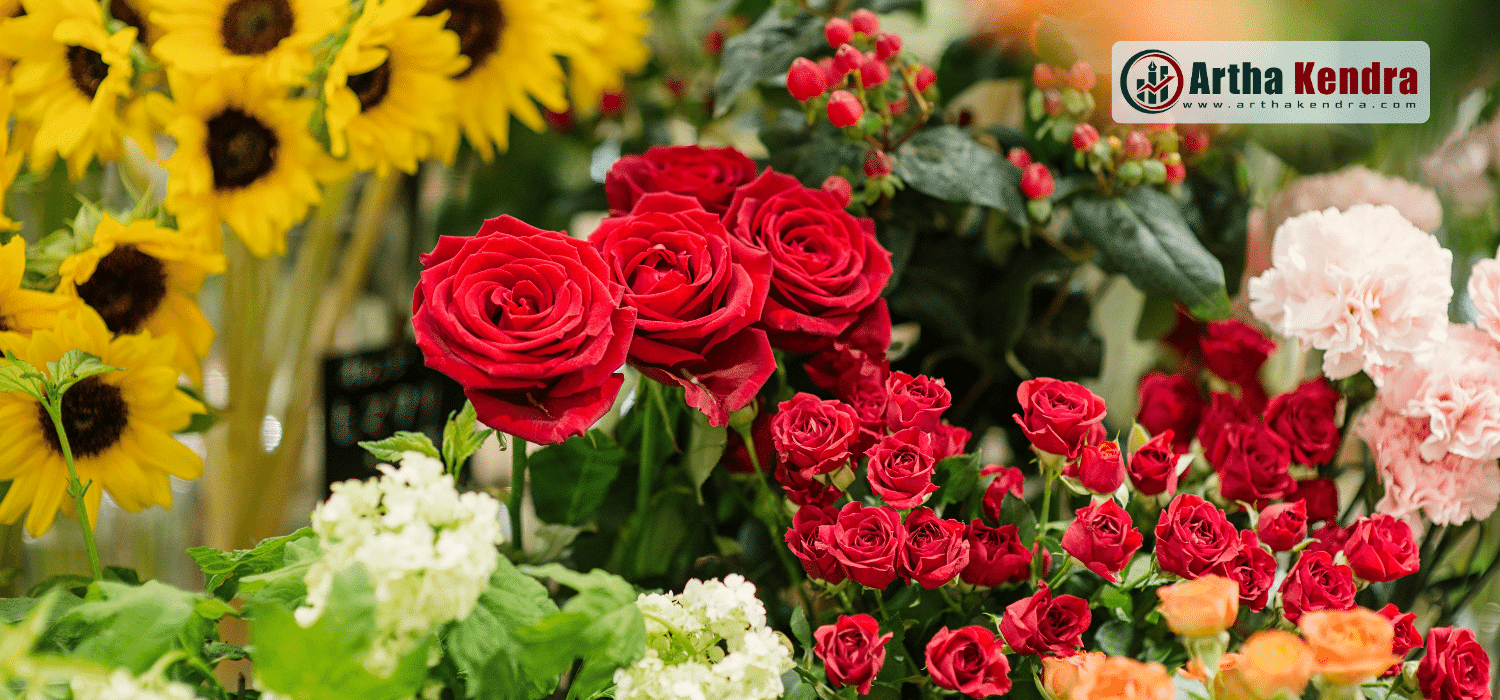The flower business has surpassed the NPR 3 Arba mark.

In the fiscal year 2079/80, the flower industry in Nepal recorded an annual turnover of NPR 3 Arba and 7 crores, marking an increase of NPR 77 crores compared to the previous fiscal year, 2078/79. The COVID-19 pandemic severely impacted the floral business, causing it to decline substantially during 2078/79, with an annual turnover of only NPR 2 Arba and 30 crores.
Mr Min Bahadur Tamang, the President of the Floriculture Association, disclosed this information, highlighting a significant growth rate of 33.63% compared to the preceding fiscal year. Initially, the association had estimated a turnover of NPR 3 Arba for the fiscal year. Still, the prolonged effects of the pandemic led to higher business volume, surpassing their initial projections.
The flower industry, heavily reliant on events like weddings, festivals, religious fasts, gatherings, and seminars, suffered a considerable downturn during the global COVID-19 pandemic five years ago. Not only did business decrease, but many flowers also went to waste.
Before the pandemic, the flower industry generated an annual turnover of approximately NPR 3 Arba 30 crores, with red roses alone contributing to a yearly business of NPR 18 crores. While domestically produced Velvet and Godawari flowers had the potential to meet local demand, red roses, primarily used for festivals and special occasions, were mainly imported from India. Although the domestic production of roses thrived before the pandemic, recent years have seen increased imports due to rising demand, resulting in higher quantities and prices.
Despite experiencing urbanization and expansion since 2007, Nepal’s flower industry has yet to completely meet market demand, especially for red roses. The business of red roses is concentrated in three districts around the Kathmandu Valley. The need for flowers has been increasing, particularly in communities like Kathmandu, Lalitpur, Bhaktapur, Kaski, Chitwan, Makwanpur, Kabhrepalanchok, Gulmi, Palpa, Dhading, Morang, and around 48 other districts, leading to the expansion of approximately 500 nurseries.
Nepal produces around 450 flower varieties commercially, benefiting over 44,000 individuals directly or indirectly. About 1,216 entrepreneurs are engaged in flower cultivation on nearly 21,000 hectares of land, with an estimated total investment of NPR 7 billion in the industry.
The flower industry is facing different challenges than during the pandemic. Key venues like the Matrimandir and Party Palace continue to operate as usual. Various meetings, conferences, and tourism-related activities also contribute to flower sales. The Chairman noted that local elections in the previous fiscal year and upcoming general elections in the Nepali month of Mangsir have significantly contributed to the industry’s growth.
With the waning impact of the pandemic, there has been a resurgence in the demand for flowers, especially during celebrations and festivals. However, the pandemic prompted some individuals previously involved in the industry to switch to other professions, resulting in a shortage of skilled labour.
Despite significant losses in recent years, the flower industry has made a strong recovery, surpassing its previous economic turnover targets.
To promote environmental sustainability and reduce the use of plastics, the Kathmandu Metropolitan City recently imposed restrictions on the sale and distribution of plastic-made flowers and decoration materials, effective from the 1st of Shrawan. Approximately 60% of such materials are used within the Kathmandu Valley.
Kathmandu has implemented a ban on single-use plastics. It has also restricted the production, sale, distribution, and import of plastic flowers and decorations. This move is expected to encourage the use of real flowers.
The Kathmandu Metropolitan City has prohibited plastic materials with a thickness of less than 40 microns since the 1st of Shrawan. This decision was presented as part of the city’s annual policy and program for the current fiscal year by Kamal Prasad Sah, the Mayor of Kathmandu.
Given the detrimental impact of excessive plastic use on the environment and human health, Kathmandu aims to curtail plastic usage. The city conducts inspections and encourages people to avoid plastic and plastic-based decoration materials.





